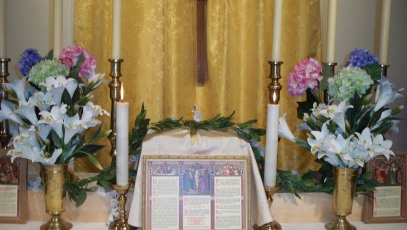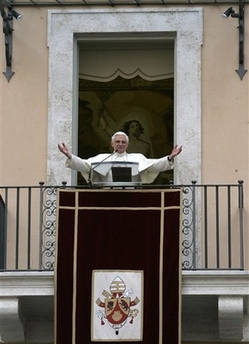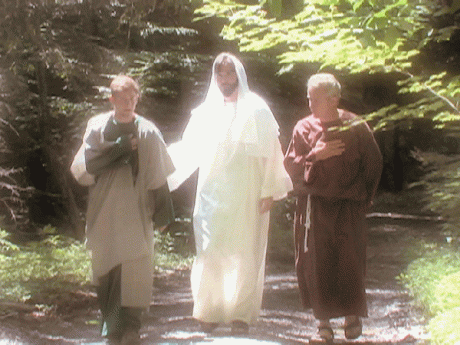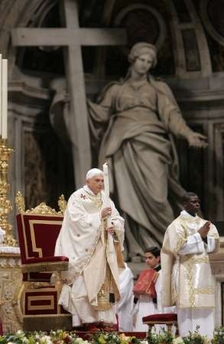Bills go to AZ Governor
March 27, 2008
Arizona passes partial-birth abortion ban
Phoenix, Mar 26, 2008 / 09:11 pm (CNA).- The Arizona legislature on Tuesday passed two bills regulating abortion in the state and sent them to Gov. Janet Napolitano for her consideration.
One bill clarified the circumstances that override the need for a minor seeking an abortion to obtain parental consent, while the other bill established state penalties for partial-birth abortion.
House Bill 2769 builds on a federal law outlawing partial-birth abortions. It makes performing the procedure a Class 5 felony, which cannot be pleaded down to a misdemeanor.
Senator Linda Gray described in detail on the Senate floor how a partial-birth abortion is performed. “This is a horrible, horrible procedure,” she said.
Ron Johnson, Executive Director of the Arizona Catholic Conference, called the bill “important pro-life legislation.” He said a state ban was needed so that Arizona citizens did not have to rely upon the United States Justice Department to prosecute violators.
“Additionally,” Johnson said, “a state ban is helpful because federal prosecutors attempting to enforce the current partial birth abortion ban must first show that interstate commerce is somehow impacted.”
Senator Paula Aboud said the bill “claims to copy the federal law but it goes too far.” She said it creates a situation where a doctor could be prosecuted under both state and federal law.
The other bill, House Bill 2263, outlined the critera a judge should consider when deciding if there is “clear and convincing” evidence that a minor has the maturity to undergo an abortion without parental consent. A judge can consider whether the minor has worked and lived outside the home, handled her personal finances, or made other significant decisions on her own.
Senator Aboud criticized the bill for burdening minors already in a difficult position. “For some, speaking to their parents is not an option,” she said.
“It is not changing the law or adding any new burdens,” said Cathi Herrod, president of the Center for Arizona Policy, a conservative think tank.
The Arizona House of Representatives also approved a bill that bars nurses from performing surgical abortions.
The bills now require the approval of Arizona Governor Janet Napolitano. She has vetoed other abortion laws in the past, including one involving parental consent for minors.
Survey Says:
March 26, 2008
Most Americans Have Positive View of Catholic Church, Pope
Washington – Most Americans have a positive view of the Catholic Church and Pope Benedict XVI, ahead of his visit to the United States next month, despite years of negative publicity resulting from the US priest abuse scandal, a survey said Tuesday. “Some of the results may be a bit surprising to those who tend to assume that the church’s critics are representative of American public opinion as a whole,” said Carl Anderson, head of the lay organization Knights of Columbus, which commissioned the poll.
The survey conducted in late February and early March showed 65 per cent of Americans have a positive view of the Catholic Church, while 28 per cent have a negative view. Hispanics, people over 65 and regular church attendees had the most favourable views of the church.
Fifty-eight per cent of respondents had a positive view of Benedict, and 13 per cent had a negative opinion of him, but the vast majority admitted they knew little about him and fully 17 per cent had never heard of him.
Still, there appeared to be large interest in his visit with 42 per cent interested in attending one of his public events in the US and 66 per cent of Catholics saying they would like to do so.
“The bottom line is that despite years of very negative stories about the Catholic Church scandals … affecting views of the pope … the American people have a very sensible and balanced view of Benedict and of the Catholic Church and they are very open of hearing his views on matters and how they might live their faith and put it to practice in their daily lives,” Anderson concluded.
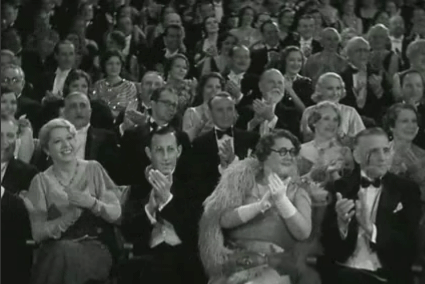
WikkiMissa
March 26, 2008
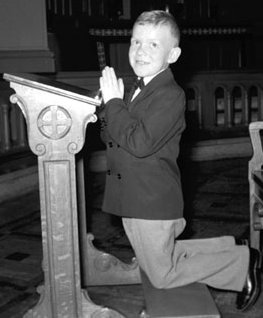
Morning Traditional Mass @ St Charles Borromeo listed on WikkiMissa.
http://honneurs.free.fr/Wikini/wakka.php?wiki=ArizonA
Resurrexi, et adhuc tecum sum, alleluia
March 25, 2008
From USA Today
March 25, 2008
Study: Spirituality a big part of kids’ happiness
By Ron Csillag, Religion News Service
Spirituality is a major contributor to a child’s overall happiness — even more so than for adults — according to a new study from the University of British Columbia.
The study tested 315 children aged 9 to 12, measuring spirituality and other factors such as temperament and social relations that can affect an individual’s sense of happiness.
“Our goal was to see whether there’s a relation between spirituality and happiness,” said Mark Holder, associate professor of psychology and the study’s co-author. “We knew going in that there was such a relation in adults, so we took multiple measures of spirituality and happiness in children.”
Past studies have shown that in adults, spiritual feelings and higher levels of religious behavior typically account for about 5% of a person’s overall happiness, said a UBC statement.
The results of the UBC study came as a surprise: 6.5 to 16.5% of children’s happiness can be accounted for by spirituality.
“From our perspective, it’s a whopping big effect,” said Holder. “I expected it to be much less — I thought their spirituality would be too immature to account for their well-being.”
Children in the study were asked to rate statements such as “I feel a higher power’s presence,” and answer questions including, “how often do you pray or meditate privately outside of church or other places of worship?”
Parents were also asked to describe each child’s apparent happiness and spirituality, and teachers rated each child’s happiness level.
The study’s authors plan to conduct the same research in India to see whether children score similar results in a country not dominated by Christianity.
Easter Message from Mr. President
March 24, 2008
.- As Christians around the United States celebrate Easter, President Bush and First Lady Laura Bush have issued the following Easter message:
Laura and I send greetings to all those celebrating the joyful holiday of Easter.
The Resurrection of Jesus Christ reminds people around the world of the presence of a faithful God who offers a love more powerful than death. Easter commemorates our Savior’s triumph over sin, and we take joy in spending this special time with family and friends and reflecting on the many blessings that fill our lives. During this season of renewal, let us come together and give thanks to the Almighty who made us in His image and redeemed us in His love.
On this glorious day, we remember our brave men and women in uniform who are separated from their families by great distances. We pray for their safety and strength, and we honor those who gave their lives to advance peace and secure liberty across the globe.
Happy Easter. May God bless you, and may God bless our great Nation.
“I am the resurrection and the life. He who believes in me will live, even though he dies.” John 11:25
Regina coeli, laetare, alleluia
March 24, 2008
Regina coeli, laetare, alleluia: Quia quem meruisti portare, alleluia. Resurrexit sicut dixit, alleluia. Ora pro nobis Deum, alleluia.
V. Gaude et laetare, Virgo Maria, Alleluia,
R. Quia surrexit Dominus vere, alleluia.
Oremus: Deus qui per resurrectionem Filii tui, Domini nostri Iesu Christi, mundum laetificare dignatus es: praesta, quaesumus, ut per eius Genetricem Virginem Mariam, perpetuae capiamus gaudia vitae. Per eundem Christum Dominum nostrum.
R. Amen.
Queen of Heaven rejoice, alleluia: For He whom you merited to bear, alleluia, Has risen as He said, alleluia. Pray for us to God, alleluia.
V. Rejoice and be glad, O Virgin Mary, alleluia.
R. Because the Lord is truly risen, alleluia.
Let us pray: O God, who by the Resurrection of Thy Son, our Lord Jesus Christ, granted joy to the whole world: grant we beseech Thee, that through the intercession of the Virgin Mary, His Mother, we may lay hold of the joys of eternal life. Through the same Christ our Lord.
R. Amen.
Feria II Infra Octavam Pasche
March 24, 2008
In illo témpore: Duo ex discípulis Jesu ibant ipsa die in castéllum, quod erat in spétio stadiórum sexagínta ab Jerúsalem, nómine Emmaus. Et ipsi loquebántur ad invicem de his ómnibus, quæ accíderant. Et factum est, dum fabularéntur, et secum quærerent: et ipse Jesus appropínquans ibat cum illis: óculi autem illórum tenebántur ne eum agnóscerent. Et ait ad illos: “Qui sunt hi sermónes quos confértis ad ínvicem ambulántes, et estis tristes?” Et respóndens unus, cui nomen Cléophas, dixit ei: Tu solus peregrínus es in Jerúsalem, et non cognovísti quæ facta sunt in illa his diébus? Quibus ille dixit: “Quæ?” Et dixérunt: De Jesu Nazaréno, qui fuit vir prophéta potens in ópere et sermóne coram Deo, et omni pópulo: et quómodo eum tradidérunt summi sacerdótes, et príncipes nostri in damnatiónem mortis, et crucifixérunt eum. Nos autem sperabámus quia ipse esset redemptúrus Israël: et nunc super hæc ómnia, tértia dies est hódie, quod hæc facta sunt. Sed et mulíeres quædam ex nostris terruérunt nos, quæ ante lucem fuérunt ad monuméntum, et, non invénto córpore ejus, venérunt, dicéntes se étiam visiónem Angelórum vidísse, qui dicunt eum vívere. Et abiérunt quidam ex nostris ad monuméntum: et ita invenérunt sicut mulíeres dixérunt, ipsum vero non invenérunt. Et ipse dixit ad eos: “”O stulti, et tardi corde ad credéndum in ómnibus, quæ locúti sunt prophétæ! Nonne hæc opórtuit pati Christum, et ita intráre in glóriam suam?” Et incípiens a Móyse, et ómnibus prophétis, interpretabátur illis in ómnibus Scriptúris, quæ de ipso erant. Et appropinquavérunt castéllo, quo ibant: et ipse se fìnxit lóngius ire. Et coëgérunt illum, dicéntes: Mane nobíscum, quóniam advesperáscit, et inclináta est jam dies. Et intrávit cum illis. Et factum est, dum recúmberet cum eis, accépit panem, et benedíxit, ac fregit, et porrigébat illis. Et apérti sunt óculi eórum, et cognovérunt eum: et ipse evánuit ex óculis eórum. Et dixérunt ad ínvicem: Nonne cor nostrum ardens erat in nobis, dum loquerétur in via, et aperíret nobis Scriptúras? Et surgéntes eádem hora regréssi sunt in Jerúsalem: et invenérunt congregátos úndecim, et eos, qui cum illis erunt, dicéntes: Quod surrexit Dóminus vere, et appáruit Simóni. Et ipsi narrábant, quæ gesta erant in via: et quómodo cognovérunt eum in fractióne panis.
At that time, two of the disciples of Jesus went that same day to a town which was sixty furlongs from Jerusalem, named Emmaus. And they talked together of all these things which had happened. And it came to pass that while they talked and reasoned with themselves, Jesus Himself also, drawing near, went with them. But their eyes were held that they should not know Him. And He said to them; “What are these discourses that you hold one with another as you walk, and are sad?” And the one of them, whose name was Cleophas, answering, said to Him: Art Thou only a stranger in Jerusalem, and hast not known the things that have been done there in these days? To whom He said: “What things?” And they said: Concerning Jesus of Nazareth, Who was a prophet, mighty in work and word before God and all the people; and how our chief priests and princes delivered Him to be condemned to death, and crucified Him. But we hoped that it was He that should have re-deemed Israel: and now, be-sides all this, to-day is the third day since these things were done. Yea, and certain women also of our company affrighted us, who, before it was light, were at the sepulchre, and, not finding His body, came, saying that they had also seen a vision of angels, who say that He is alive. And some of our people went to the sepulchre, and found it so as the women had said, but Him they found not. Then He said to them: “O foolish, and slow of heart to believe in all things which the prophets have spoken! Ought not Christ to have suffered these things, and so to enter into His glory?” And, beginning at Moses and all the prophets, He expounded to them in all the Scriptures the things that were concerning Him. And they drew nigh to the town whither they were going; and He made as though He would go farther. But they constrained Him, saying: Stay with us, because it is toward evening, and the day is now far spent. And He went in with them. And it came to pass, whilst He was at table with them, He took bread, and blessed, and broke, and gave to them; and their eyes were opened, and they knew Him, and He vanished out of their sight. And they said one to the other, Was not our heart burning within us whilst He spoke in the way, and opened to us the Scriptures? And, rising up the same hour, they went back to Jerusalem, and they found the eleven gathered together, and those that were with them, saying, the Lord is risen indeed, and hath appeared to Simon. And they told what things were done in the way, and how they knew Him in the breaking of bread.
Mmmmm. Chocolate Bunny.
March 23, 2008
Conversi ad Dominum
March 23, 2008
The final paragraph of the Holy Father’s Easter Vigil Homily. The entire homily may be found here:
http://www.vatican.va/holy_father/benedict_xvi/homilies/2008/
documents/hf_ben-xvi_hom_20080322_veglia-pasquale_en.html
In the early Church there was a custom whereby the Bishop or the priest, after the homily, would cry out to the faithful: “Conversi ad Dominum” – turn now towards the Lord. This meant in the first place that they would turn towards the East, towards the rising sun, the sign of Christ returning, whom we go to meet when we celebrate the Eucharist. Where this was not possible, for some reason, they would at least turn towards the image of Christ in the apse, or towards the Cross, so as to orient themselves inwardly towards the Lord. Fundamentally, this involved an interior event; conversion, the turning of our soul towards Jesus Christ and thus towards the living God, towards the true light. Linked with this, then, was the other exclamation that still today, before the Eucharistic Prayer, is addressed to the community of the faithful: “Sursum corda” – “Lift up your hearts”, high above the tangled web of our concerns, desires, anxieties and thoughtlessness – “Lift up your hearts, your inner selves!” In both exclamations we are summoned, as it were, to a renewal of our Baptism: Conversi ad Dominum – we must distance ourselves ever anew from taking false paths, onto which we stray so often in our thoughts and actions. We must turn ever anew towards him who is the Way, the Truth and the Life. We must be converted ever anew, turning with our whole life towards the Lord. And ever anew we must allow our hearts to be withdrawn from the force of gravity, which pulls them down, and inwardly we must raise them high: in truth and love. At this hour, let us thank the Lord, because through the power of his word and of the holy Sacraments, he points us in the right direction and draws our heart upwards. Let us pray to him in these words: Yes, Lord, make us Easter people, men and women of light, filled with the fire of your love. Amen.
